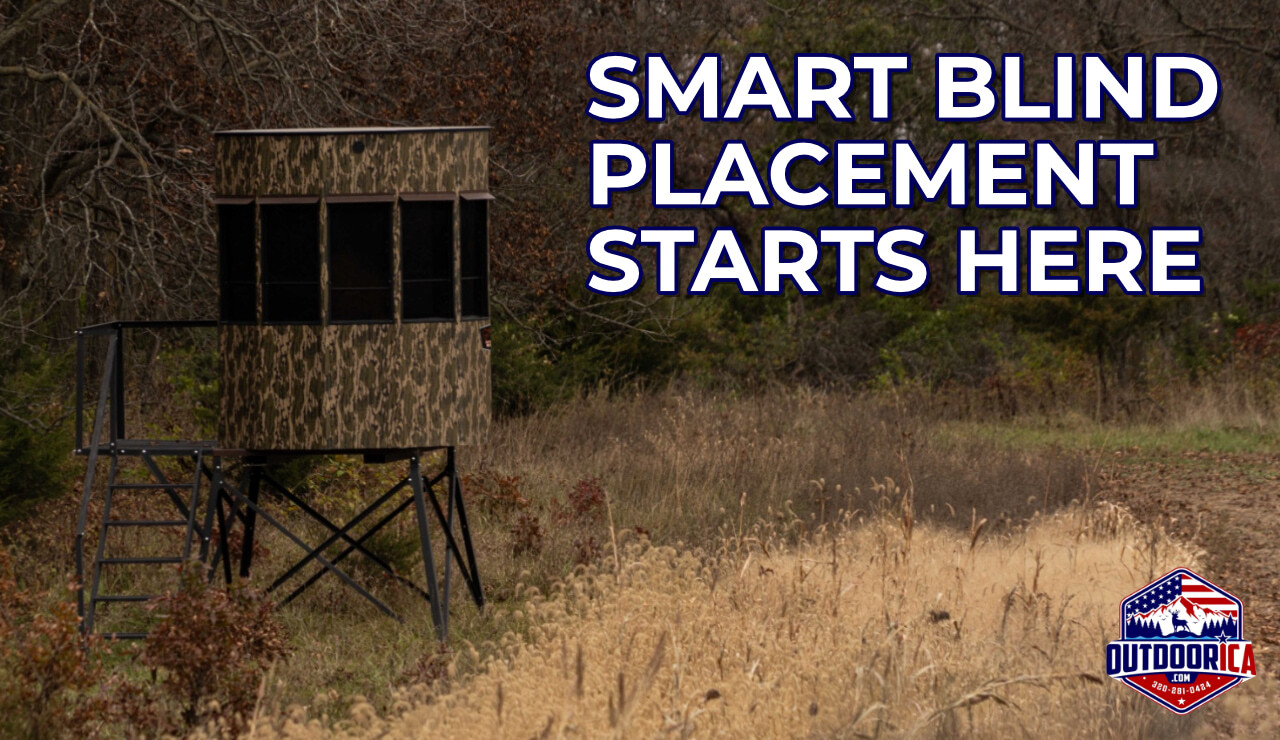Posted by OUTDOORICA on 8th Oct 2025
Perfect Blind Placement: How to Choose the Best Spot for Deer Hunting Success

Perfect Blind Placement: How to Choose the Best Spot for Deer Hunting Success
Even the best hunting blind can’t make up for a bad location. The truth is, blind placement is just as important as the blind itself. Choosing where and how to set up determines whether you’ll be watching empty woods—or lining up the perfect shot.
At Outdoorica in Albany, MN, we’ve seen what works for Minnesota hunters across all terrain types. Whether you hunt from a Rutted Up, Orion, or NXT Gen blind, these placement strategies will help you turn preparation into success.
1. Scout the Land Before You Set Up
Picking a spot isn’t about luck—it’s about reading the land and deer behavior. Start by walking your property or hunting area to find active trails, rub lines, bedding areas, and food sources.
Look for pinch points and funnels—natural bottlenecks where deer are forced through narrow paths like between a ridge and a swamp, or along fence lines. These travel corridors are some of the most consistent locations for blinds.
Set your blind near—but not directly on—food or bedding areas. Deer typically move between these zones during early morning and evening hours, so positioning 20–30 yards downwind gives you the perfect advantage without alerting them.
2. Use Terrain and Water to Your Advantage
In Minnesota’s diverse landscape, edges of ponds, creeks, or marshes make excellent blind locations—especially during dry periods when water draws steady movement.
Choose slightly elevated ground to avoid flooding and take advantage of natural cover like brush piles or tall grass to break up your outline. The blend of water access and concealment can be a major advantage in both bow and rifle seasons.
3. Play the Wind — Always
Wind direction can make or break a hunt. Always place your blind downwind or crosswind of deer trails and feeding areas to keep your scent away.
Minnesota’s fall winds can shift quickly, so keep a secondary location in mind if conditions change. Tools like HuntStand or OnX Hunt help you check wind patterns before every hunt.
Combine smart placement with scent-eliminating spray or ozone gear, and you’ll stay undetected even during long sits.
4. Blend In Naturally
Once your spot is set, take time to brush in your blind using local branches, leaves, and grasses. This breaks up outlines and keeps deer from spotting something unnatural in their environment.
For hard-sided blinds like Rutted Up, Orion, or NXT Gen, choose finishes that match your surroundings—browns for fields, camo for timber. Refresh your cover each season, and use evergreens for winter concealment.
5. Mind the Sunlight and Visibility
A great view can quickly turn into a disadvantage if the sun blinds you during prime hours. Aim to face your blind north or east so sunrise and sunset light won’t pour through your windows.
Before committing to a setup, sit inside your blind and check your shooting lanes and sight lines. Clear small openings through brush if needed, but avoid skylines where your silhouette stands out.
6. Plan a Quiet, Scent-Free Approach
Your blind setup is only as good as your entry route. Plan a path that stays downwind from deer movement and avoid walking through bedding areas.
Rake or clear your route ahead of time to reduce noise, and spray down with scent eliminator before heading in. A calm, scent-free approach will keep your hunting area productive all season long.
7. Comfort and Safety Go Hand in Hand
The most successful hunters are the ones who can sit quietly and comfortably for hours. Before opening day, test your chair height, window alignment, and field of view.
Outdoorica’s hunting blinds are designed for insulation, warmth, and comfort so you can focus on the hunt—not the cold. Add a padded chair, small shelf, or carpeted floor mat to make your setup even quieter.
8. Common Mistakes to Avoid
- Setting up too close to trails or feeding areas
- Ignoring wind shifts or scent direction
- Leaving windows open, creating light leaks
- Forgetting blaze orange visibility requirements during firearms season
Patience pays off—give deer time to adjust to your blind, and you’ll see results.
Final Thoughts
A great hunting blind deserves a great location. By reading the land, respecting the wind, and planning your approach, you’ll turn a quiet sit into a successful harvest.
Whether you’re upgrading your setup or adding a new blind this season, Outdoorica has you covered with durable, insulated options built for Minnesota’s hunting seasons. Visit our Albany showroom or browse online to find your perfect blind.

